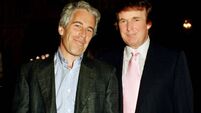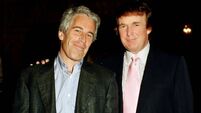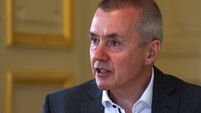David McNamara: Markets have found the pain threshold for the US

The U-turn is a reprieve for now but the clock ticks for a further 90 days.
Following a tumultuous week on financial markets, with US President Donald Trump unwinding some tariff measures and ratcheting up others, uncertainty abounds, with little clarity on the future path of policy. However, the volte face from Trump in introducing a 90-day pause on some tariffs suggests the markets have found the pain threshold for the US administration and have potentially set a guardrail on future policy.
To recap, a simultaneous sell-off in riskier assets (US stocks) and supposedly safe-haven assets (US treasuries), alongside a depreciation in the dollar, brought markets to a precipice of a potential contagion event.
In particular, the deterioration in the Treasuries market risked material consequences for other credit and money markets it underpins. The moves in the US bond market very much reflected the pattern of an emerging market economy in periods of stress, instead of the more predictable behaviour of a ‘flight to safety’ in Treasuries observed during prior stock market corrections. Most critically, the large twin deficits in the US fiscal and current accounts implied the ‘kindness of strangers’ on which the US system relies was wearing thin.
The positive outcome of last week’s events is that the administration was eventually constrained by the markets. President Trump unwound most of the country-level tariffs back to a baseline of 10% for a period of 90 days to allow negotiations and later introduced some short-term exemptions for key electronic goods, including semiconductors and phones. Whatever the outcome of any trade talks, it may prove difficult for Trump to re-enact these tariffs.
However, following the initial market surge post the U-turn, trading has been choppy as investors digest the fact that the remaining tariffs are substantially higher than the January 2025 baseline, including the 25% rate on autos and steel tariffs.
Moreover, the US and China have ratcheted up tariffs on a tit-for-tat basis to levels (nearly 150% on US imports from China) which are likely to cause a significant dislocation in trade flows in global trade flows. The further slide in the dollar in recent days reflects the continued shift in capital from US assets to other markets in recent days, as the era of ‘US exceptionalism’ is firmly extinguished in financial markets.
So, while the U-turn is something of a reprieve for now, for European trade partners, the clock ticks for a further 90 days, with little certainty on the eventual landing zone for US trade policy. In this environment, consumer and business sentiment will likely fall, with repercussions for global GDP growth and the US economy most at risk of a severe economic outcome.













